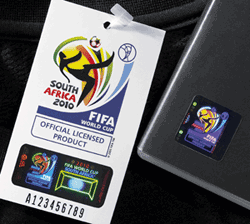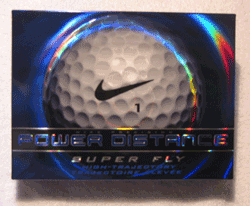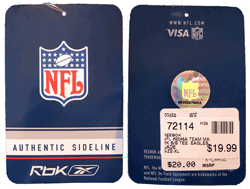Featured Stories
-
Tension: The First Thing We Must Get Right
Web tension is arguably the most important parameter for any web process. Tension is the first thing we must get right. -
Principles of Narrow Web Slitting
For those veterans in the slitting-winding community, this commentary is not necessarily new information, but reviews are always good too. -
Recyclability & Circularity Consumers Support Sustainable Brand Packaging
Sustainability has never been more central for the printing and packaging industries.
News | New Products
-
Hong Kong PrintPack Fairs Open in April
Jointly organized by the Hong Kong Trade Development Council and CIEC Exhibition Company (HK) Limited, the two PrintPack Fairs will be April 27-30, 2024 at AsiaWorld-Expo
-
BioEmitter®- Keeping Corrosion and Rust at Bay in Enclosed Spaces
One of the most important missions of Cortec® Corporation, a global leader in the corrosion protection industry, is environmental responsibility.
-
Fedrigoni Names New Commercial Senior Vice President, Chief Marketing Officer
Fedrigoni — the world’s leading manufacturer of specialty papers, premium self-adhesive materials, RFID and connected solutions
-
SEI integrates Vetaphone on new Labelmaster KyoJet
SEI Laser Converting is based in Buja in the northeast corner of Italy.
-
Former Division of the Knox Woolen Mill in Camden Acquired
Edward H. Best Company has been acquired by Windward Ventures LLC, a Maine-based investment group.
-
Miraclon and BOBST reinforce strategic partnership
Miraclon and BOBST have reinforced their strategic partnership, with Miraclon named as the plate technology partner in BOBST’s new Competence Center in Atlanta.
-
Anderson & Vreeland announces the expanded role of Tyler Thomas as National Sales Manager - U.S.
Anderson & Vreeland, a prominent manufacturer and distributor of flexographic print technologies, equipment, and consumables, is pleased to announce the expanded role of Tyler Thomas as National Sales Manager - U.S.
Expert Advice
Branding: Holograms Score in Protecting Sports Merchandising
- Published: August 13, 2009
Sports merchandising is big business and increasingly has benefitted from the application of hologram-based security tags over the past 15 years. However, there can be pitfalls for the unwary. Here, Glenn Wood of the International Hologram Mfrs. Assn. (IHMA) offers advice to security providers looking to tap into this lucrative market and looks at how holography can protect brands and revenue streams from the threat of counterfeiters.
Undoubtedly, the greatest global sporting events are the summer and winter Olympics and FIFA Football World Cup. Virtually every Olympics event since the Atlanta Games in 1996 has had its licensed product merchandise—from caps, tee-shirts, and tracksuits through books, programs, badges to bags, scarves, and cuddly toys—protected and tracked with holographic technology.
Most recently was the Beijing Olympic Games, where visitors were advised that the best way to avoid counterfeits was to buy Olympic merchandise only at licensed stores. There, they were able to find inside the packaging of all licensed products an anti-counterfeiting label featuring a small security hologram attached to an official Olympic Games’ emblem.
And this tradition, established back in Atlanta, GA, more than 13 years ago, is to be carried forward at least until 2012 because the organizing committee of the London Olympics has indicated that all the merchandise on sale will be subject to anti-counterfeit tagging, which historically has been in the form of holograms affixed to labels, tags, or similar.
Before then, meanwhile, are the 2010 Winter Games in Vancouver (), the merchandise for which—complete with hologram—recently has gone on sale.

The official merchandise for that other great sporting occasion—the FIFA World Cup—also will continue to benefit from holographic technology. This was first used for the World Cup in 1998 in France, followed by the 2002 World Cup in Tokyo and Seoul, and then in 2006 in Germany. The supplier to the latter, De La Rue Holographics, recently has been re-selected to provide protection for the merchandise for the 2010 World Cup, which is being held in South Africa.
Benefits for All
The solutions offered by the holographic companies are similar in concept and comprise not only the production of uniquely numbered security labels and hang tags complete with holograms (and, increasingly, a range of other security features as well) but, critically, a fulfillment and tracking service. These labels are called off by the licensees and data on the quantities provided to each, including the unique number of each label, is provided to the licensors who then bill the licensees (the contracts generally involving an initial licence fee and then a royalty per item of merchandise sold).
This system offers benefits to both parties. It enables the licensor to protect their brand, which is not only an important marketing tool for raising awareness and generating loyalty, but is also a major revenue-earner. It enables them to collect the royalty payments from their licensees based on the number of labels purchased—and hence the number of merchandised goods intended for sale.
The system provides a strong deterrent for preventing not only counterfeiting, but also grey market diversion, as under-reporting becomes highly visible and out of territory sales are easily traceable. And, through the use of enforcement teams, the authenticity of official merchandise can be checked and verified in the field.
Licencees, meanwhile, benefit because their investment in the brand is protected from counterfeits. And with merchandised products typically commanding a premium price (which makes them an immediate target for counterfeiters), another group to benefit are the consumers themselves.
But a cautionary word: Although all this offers great opportunities for a security provider, the financial success of any contract can be as uncertain as for the event itself. The provider usually is granted a non-exclusive license to provide labels and hang tags but all other licensees will be referred to the supplier for these security features. The downside is that the quantity of labels and tags cannot be guaranteed, a situation exacerbated by the right of the licensor to exempt certain licensees at the last moment. This can be true particularly of printed material, such as event programs, which may or may not be required to have a secure label applied.
There may be other geo-political forces that influence the success or otherwise for the security supplier. For example, the Women’s World Cup Soccer in 2003 was to have been held in Beijing but the event was devastated by the outbreak of SARS in China during the run up. The switch of venue to the US had a serious impact on all licensees, many of who had already produced shirts, caps, pins, etc., with the Beijing logo. Overall, it is unlikely that anyone profited from the licensing arrangements at this event. The ever-present threat of boycotts also adds to the risk factor.
Page 2 of 3
Matters can be further complicated at sporting events where teams are successively knocked out—hence demand will change very rapidly according to the success or otherwise of the participating teams. The Football World Cup, Rugby World Cup, and Cricket World Cup are prime examples of this as opposed to “evergreen” (ongoing) programs and events like the FA and the US sporting leagues.
Closer to home, the sheer complexity of supplying a myriad of different licensees with a number of different manufacturing locations poses significant challenges not normally encountered in conventional supply contracts. As an example, the 2006 FIFA World Cup involved 170 licensees and the delivery of labels and hang tags to 400 different locations worldwide. The 2004 Olympics, meanwhile, involved 19 licensees and two international sponsors, between them producing 35 categories of products with 4,000 different item references, each or which was protected by one of eight different types of authentication label or tag and sold though 12,000 different retail outlets
The only way for the supplier to deal with such uncertainties and complexities is to ensure that his manufacturing and delivery systems are very nimble. Ideally, the label and tags should be produced on demand so that inventory levels are kept to a minimum. Other licensees are doing the same thing and might be manufacturing anywhere in the world. They expect delivery of the labeling within 24–48 hr maximum so freight costs can run extremely high unless there are local stockpiles.

A further frustrating aspect impacting directly on production cost is run length. The dream of every manufacturer is long runs of few SKUs. Unfortunately, the wide variety of merchandise dictates the need for labels of various sizes plus a tag. Wily licensees often will request the smallest size label on the grounds that it must be cheaper and major sponsors such as Nike, Adidas, Reebok, etc., might request a tag customized to their own design. Woe to the supplier that attempts to argue with a licensee who is also contributing several million dollars in sponsorship to the event under consideration!
The successful supplier also may be required by the licensor to service licensees in their own language and currency. Both of these can be onerous constraints, particularly as label and tag supply can begin two years before the event requiring some position to be taken on exchange rates.
Successful Applications
However, all this should not detract from the fundamental impact holography has had on thwarting the counterfeit trade surrounding some of world sport’s biggest set piece occasions. In addition to the Olympics and FIFA World Cup, on both sides of the Atlantic and around the world we have seen some great examples of hologram innovation to ensure the bona fide sports merchandise stands out from the fake.
One of the biggest and most glamorous sports on the planet, Formula One motor racing, uses holography to protect its treasured brand identity, with many of the top racing teams now featuring security holograms to protect their official merchandising from the counterfeiting. Ferrari is just one notable example—the famous Italian marque has produced a fountain pen and metal case gift set for fans featuring a hologram on the back of the product along with an official logo as a mark of authenticity.
In the UK, De La Rue Holographics, working for Copyright Promotions Sport (CPS), provides a highly secure brand authentication solution for The Football Assn. (The FA) enabling it to track and manage the England Three Lions brand once it has been licensed, protecting it against the threats from counterfeit, grey market diversion, and piracy.
There’s little surprise to learn that it was in the US—and in the major sporting leagues—where the sports merchandising industry we see today really took off at the beginning of the 1990s.
Page 3 of 3
Today, all the major US leagues have embraced holography to varying degrees to protect reputation, brand image, and importantly, revenue streams. The big four: American football (NFL), baseball (MLB), basketball (NBA) and hockey (NHL) all have successful licensed product protection programs to monitor royalty income while a number of the smaller leagues, such as soccer, have followed suit.

It’s a sobering thought that the annual turnover in licensed merchandise sales runs to several billion dollars within the major leagues, so it makes sense that revenue streams should be suitably protected, and they have been, for several years, by the likes of OpSec. Sports Business Simulation (SBS) reports that the size of the sports business industry reaches an estimated value of $213 billion—twice the size of the US auto industry and seven times the size of the movie industry.
The NFL leads revenue values with an annual income in excess of $2.5 billion. The American Football Superbowl Final alone is one of the biggest annual sporting events in North America, with a global audience and generating hundreds of millions of dollars in spin-off sales and promotions. So it’s no wonder that the game’s administrators have moved to thwart the increasingly sophisticated counterfeiters keen to capitalize on this lucrative market with the introduction of licensed merchandise featuring serialized holograms as the key authentication device in track and trace programs.
The NFL is swiftly followed by major league baseball with revenues of $2.3 billion. Colleges, NASCAR, NBA, NHL, and other leagues, teams, and sports together generate $5.6 billion. All have lucrative official merchandising programs protected by hologram-based security tagging systems.
Even college sports generate enough merchandise sales to justify dedicated protection programs. The NCAA (National Collegiate Athletic Assn.) is the largest collegiate athletic organization in the world that organizes the athletic programs of many colleges and universities in the US and Canada.
Technical Variations
Although merchandising programs follow a similar pattern, there are variations in the form that the labels and hang tags take and in the technology deployed. In the US, for example, the hologram is supplied mainly as a self-adhesive label or as a printed label with self-adhesive stripe or patch. In the early days, the application of these was relatively crude, with little thought paid to the overall aesthetics of the finished product—although this is now changing, and the integration of the hologram with the printed label is becoming more apparent. A good example is the new holographic label produced for MLB merchandise. This features a raised stitch-like feature printed to register over the hologram that simulates the stitching on regulation MLB baseballs.
This integration has always been the case in Europe, where the hologram traditionally has been applied as hot stamping foil. This in itself generally is considered to be more secure, as well as enabling greater visual assimilation with the rest of the label.
In virtually all cases, the visual security of the hologram is complemented by a range of additional security features, both overt and covert, providing different layers or levels of security for different groups to authenticate (e.g., the public, retailers, the licensors, and law enforcers).
The most extreme case of this was the hang tags for the Beijing Olympics, where the holographic security, in the form of a windowed thread, was just one of many features (such as watermark, intaglio print and latent image and security fibres) that are more commonly used to protect currency.
Since China is a major source of counterfeit products, and since the tags were produced by China Banknote Printing and Minting Corp., this level of sophistication was not, perhaps, surprising. It remains to be seen whether this sets a trend for future security labels for sporting merchandise.
Whatever form the holograms takes, unquestionably, security labelling and tagging systems that use them have become established as an iconic symbol of authenticity, and have proved their worth for over many years in safeguarding several billion dollars worth of merchandise and brand reputation—something that you can’t put a price on. The future certainly looks bright for this flexible, versatile, and cost-effective technology.
The International Hologram Manufacturers Assn. (IHMA) is made up of 90 of the world's leading hologram companies. IHMA members are the leading producers and converters of holograms for banknote security, anti-counterfeiting, brand protection, packaging, graphics and other commercial applications around the world. IHMA member companies actively cooperate to maintain the highest professional, security and quality standards.
RELATED LINKS
Special Report: Chain of Protection—Product Authentication & Brand Security
Forensic Packaging
Paper's Pledge
Printing Partnerships
Tax Stamp Forum: Recovery of Tax Revenue Paramount for Governments
Crime Stoppers
Edible Markers
A Host of Options for Brand Security













